The capital Windhoek (translated as “windy corner”) is the political, cultural, industrial and economic center of Namibia with 400,000 inhabitants. Windhoek was founded on October 18, 1890, when the foundation stone for what is now known as the “Alte Feste” fortress was laid. Other popular sites include the Tintenpalast, the Christuskirche, the Kaisergymnasium and the Heinitz und Sanderburg. The quiet and well-organized city with a colonial German touch, offers German restaurants and shops, a widespread use of the German language, the celebration of German customs (such as Carnival or Oktoberfest) - the German tradition is reflected everywhere. Even the beer is still brewed according to the German "Reinheitsgebot" (special purity law). Mixed with African traditions and roots, Windhoek offers a unique atmosphere and a relaxed lifestyle that makes the city so endearing.
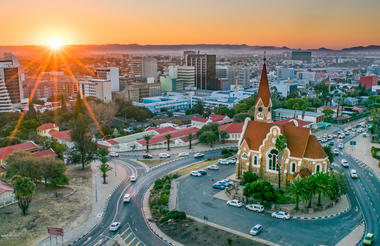
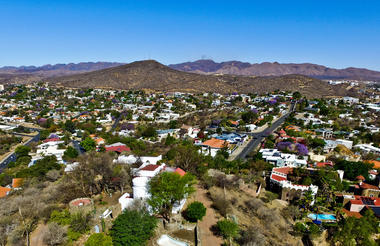
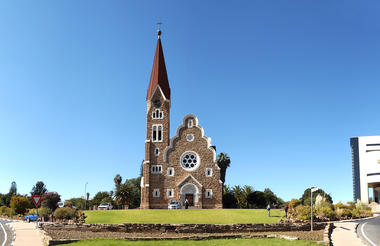
With a backdrop of rolling hills and grassy plains – Okonjima Nature Reserve is best known for its diverse animal species - such as cheetahs, lions, hyenas and leopards. Boasting mixed woodland and thornveld plains, the land is home to Africa's most extensive wild cat population. Established in 1991, the AfriCat Foundation is a non-profit organisation committed to the long-term conservation and education of Namibia's large carnivores - and even allows you to track the cheetah on foot! Okonjima, with its rugged bushveld and mountainous outcrops, is a truly unique Southern Africa experience.

Surrounded by grassland and mopane shrublands, eastern Etosha is best-known for its remarkable variety of wildlife. Springbok are found abundantly within this region, while the many waterholes attract black rhinoceros and various antelope. During the rainy season, animals tend to migrate near the eastern Von Lindequist Gate. Makalani palms sway around waterholes on this side of the park, and the nearby pans are hotspots for blushing pink flamingos. Pure bliss is finding a quiet spot to wait for action, be it zebra jostling for a drink or sudden drama as elephant arrive in rumbling groups to quench their thirst.
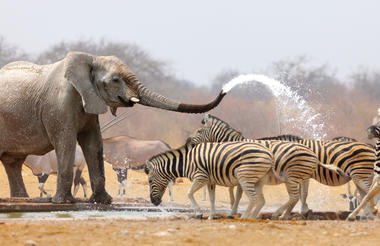

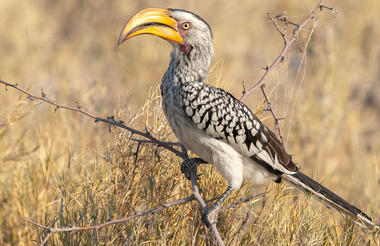
Featuring breath-taking panoramas, unforgettable sunsets, and abundant wildlife, Etosha National Park is Namibia's premier wilderness conservation area. The Etosha Pan - a shallow salt pan covering an area of 5.000 Square kilometres lies in the heart of the park. Natural springs are found in this dry terrain, making for excellent game viewing. Throughout the Park, the landscape is generally flat, with various habitats ranging from mopane woodland to wide, open, virtually treeless plains. Etosha is home to one of the world's most stable black rhino populations, along with lion, elephant, leopard, cheetah, and hyena.
Etosha's southernmost section is known for its rich population of both white and black rhino. Etosha South is home to the Okaukuejo Rest Camp, which is famous for its floodlit waterhole. The many viewpoints overlook picturesque bush-scapes and abundant wildlife. Getting into the South is accessible by Andersson's Gate. Here, visitors can expect to see many animals, including lion and the rare, black-faced impala. However, the most notable of animals found here are elephants. Enjoy guided nature walks, game drives, or simply watching the sunset from this breath-taking location.

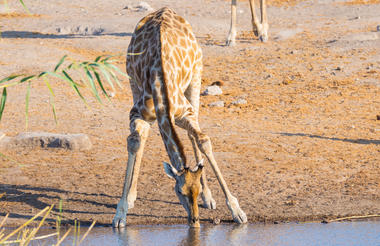
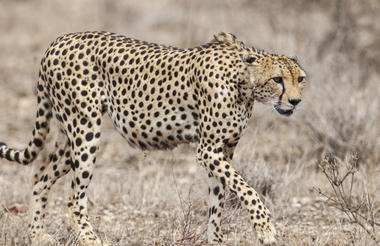
The small town of Uis is located in the Erongo Region of Namibia, at the foot of the Brandberg, Namibia's highest mountain. Just outside of town, the world-famous 'White Lady' rock painting is found within these mountains and is said to be over 20,000 years old. Uis is primarily known for its tin mining, and the area boasts rich amounts of rocks and minerals. Although mining is no longer what it used to be, people come from all around to view the old mines and learn about the culture and history. Many famous geologists visit Uis to study the fascinating geology and rare rocks that are found here.
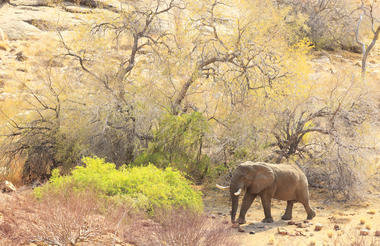
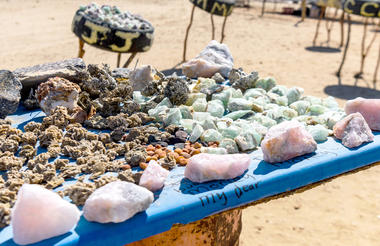
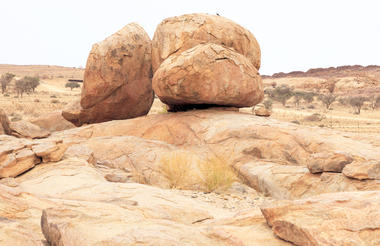
Nestled on the west coast of the Namib Desert - where the dunes meet the ocean - is the popular little town of Swakopmund. This laid-back area offers charm in bucket loads with its colonial architecture, quaint restaurants and historic landmarks - such as the "Mole" sunset pier. The cobbled streets and picturesque buildings indicate the rich heritage and culture this town holds, while the museums show its diverse history. This area radiates personality - from the more relaxed daytime charm to the vibrant atmosphere of the night - this is one of Namibia's hidden gems that need to be experienced.

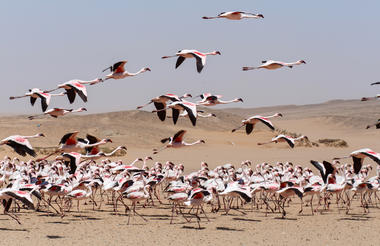

The quiet town of Okahandja, with its flat, grassy plains and sandy roads, is located in the central parts of Namibia. Okahandja is rich in history and revolves mainly around the Herero people. Every year, the tribe commemorates a traditional Herero Day where pageants are held, and the ladies dress in traditional dresses and headdresses. A few kilometres southwest of Okahandja are the thermal springs of "Gross Barmen" - a historic settlement and a recreational spa area on the Swakop River - a great way to spend a relaxing day. The town, although small, has so much to offer, and people are always left wanting more.





